Located east of the University of Hawai'i at Mānoa and west of Wai'alae Kāhala, Kaimukī is one of the oldest communities on Oahu. It’s name means “ti oven” because of the numerous ti ovens Menehune built in the area to make a sweet candy-like product. It is primarily a residential neighborhood with a mixture of historic homes to huge modern structures. The small business district primarily located along one major roadway draws people from all over the island with its well known restaurants and eclectic shopping venues.

*This population distribution only includes the following areas of Kaimukī based on the Kaimukī Neighborhood Board map: Kaimukī : 22nd Avenue, Kaimukī: KCC, Maunalani Heights, Lower Wilhelmina, Kaimukī: 6th Avenue, Kapaolono Field.
Methodology
The Kaimukī community became the focus of the HI-CFL project in the fall of 2015. The process took several months to complete. After interest from the community was confirmed, an open public gathering (Kick-Off) was held to inform residents, stakeholders, and interested community members about the HI-CFL project. A workshop followed specifically for residents to provide instruction on utilizing Mapping Attributes: Participatory Photographic Surveys (MAPPS) to survey community features by photographing and geocoding place-based characteristics. Upon completion of MAPPS, the volunteer photographers reviewed all photos and determined which illustrated significant features of their neighborhood applying the WHO physical, social, and service environments. At the final event (Community Conversation), community members viewed the selected photos, discussed, and suggested ideas for how the Kaimukī community could become a Community For a Lifetime.
Between October and December 2015, a total of 32 individuals (57 cumulative participants) including Kaimukī residents, stakeholders, and interested community members became involved in the HI-CFL project. Twenty volunteer MAPPers took 294 photographs and selected 30 to discuss at the Community Conversation. The meetings were conducted at the Kīlauea District Park complex.
| Date |
Meeting |
Number of Attendees |
| October 9-16, 2015 |
Kick Off & MAPPS Training |
29 |
| November 20, 2015 |
MAPPS Discussion |
12
|
| December 11, 2015 |
Community Conversation |
16 |
Illustration of Kaimukī MAPPS Routes
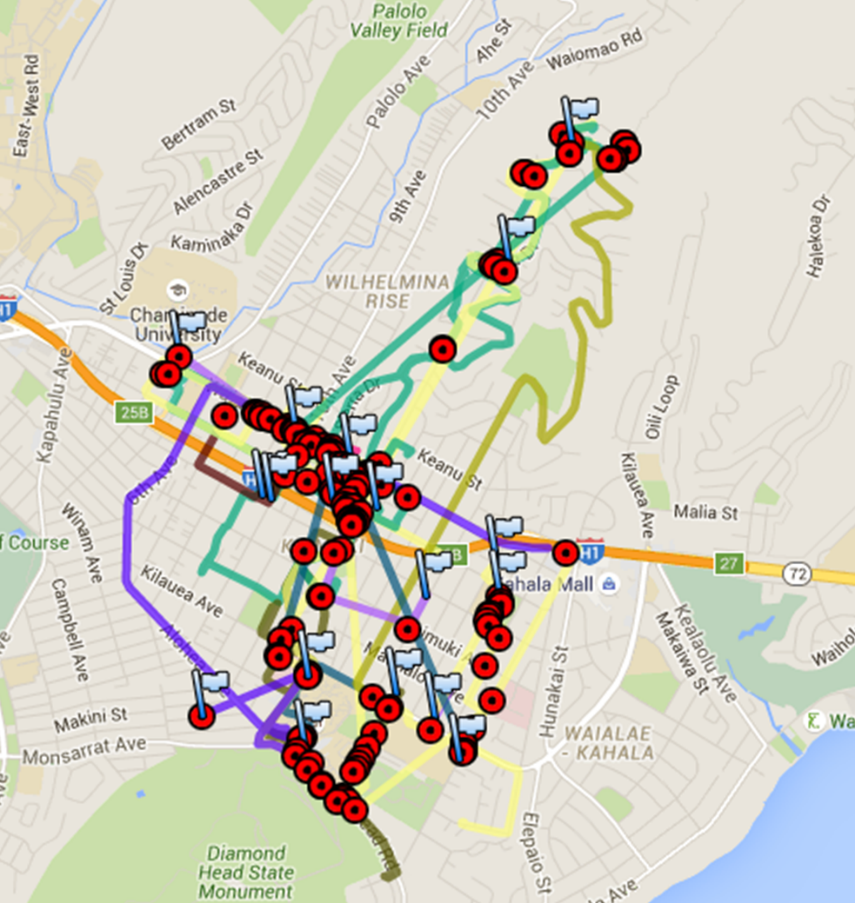
Summary of Results
With the limited number of persons involved in the project, the information provided in this report may not reflect the views of the community as a whole. However, it offers an initial scan on the age-friendliness of the Kaimukī Community.
Is Kaimukī Age-Friendly?
I: Physical Environment
At the Community Conversation, 90% of the participants agreed with the statement, “Kaimukī has a physical environment that supports physical and mental health behaviors”.
 The hilly geography of Kaimukī provides open vistas in selected places to observe the skyline, ocean, and valleys; even fireworks on holidays. Although modernization has affected the look and feel of old Kaimukī, there are still areas where one can pretend they have gone back in time. Keeping the community unique by protecting this kind of environment with low-rise residential and commercial buildings and streets without visible electrical/cable/tv wires seem to be important.
The hilly geography of Kaimukī provides open vistas in selected places to observe the skyline, ocean, and valleys; even fireworks on holidays. Although modernization has affected the look and feel of old Kaimukī, there are still areas where one can pretend they have gone back in time. Keeping the community unique by protecting this kind of environment with low-rise residential and commercial buildings and streets without visible electrical/cable/tv wires seem to be important.
“When I think of nice neighborhoods, I think of wide sidewalks and no visible electrical wires” said a participant. In some residential areas of Kaimukī, there are wide, tree lined streets that made people happy they live there. There were also photos of the opposite, i.e., electrical wires, some bunched together and not appearing to be safe. People were also concerned about vandalism, graffiti, trash on sidewalks (not just residential, but trash in front of business), and homeless.
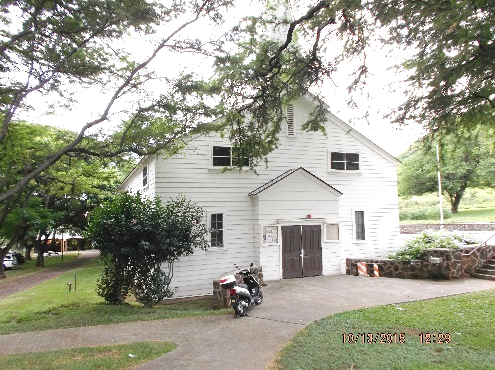 People appreciated and strongly cared about the numerous older and historical buildings in Kaimukī. The Fire Station located on Kaimukī Hill and the (Fort Ruger) Chapel on the Kapi'olani Community College’s (KCC) campus were mentioned as valuable resources that residents were proud of. On the other extreme is the old Queen Theatre which has been vacant and an eyesore. Unhappiness was also expressed regarding the transformation of the 100+year old Liliuokalani School to a Department of Education facility with little regard to the request for continued community utilization where it had served as a center of family and community resources for generations.
People appreciated and strongly cared about the numerous older and historical buildings in Kaimukī. The Fire Station located on Kaimukī Hill and the (Fort Ruger) Chapel on the Kapi'olani Community College’s (KCC) campus were mentioned as valuable resources that residents were proud of. On the other extreme is the old Queen Theatre which has been vacant and an eyesore. Unhappiness was also expressed regarding the transformation of the 100+year old Liliuokalani School to a Department of Education facility with little regard to the request for continued community utilization where it had served as a center of family and community resources for generations.
Kaimukī has an abundance of green space and recreational areas that are well utilized and loved by its residents, friends, family, and tourists to exercise and socialize. Located in the middle of the town, is Kaimukī Park which offers adult and keiki programs, playground equipment, outdoor courts, meeting facilities, indoor gym and pavilion. Other parks in the area (Kilauea, Kapaolono, Petrie, Maunalani, etc. ) provide a variety of amenities such as large open fields, small non-lap size pool, and/or recreation facilities, etc. Smaller parks also dot the community with their unique attributes, including a small rock area fronting 12th Avenue Some of these parks have large trees and benches for people of all ages to rest and enjoy watching keiki play. Kamaaina and visitors alike also frequent KCC’s scenic Cactus Garden nearby exercise stations. In this general area, a large Dog Park encourages dogs and people to interact.
 However, participants felt that some improvements can be made. Some parks are not well lit and seem dangerous at night. Homeless have been frequently seen and have been a source of unpleasant issues for the other community users. Park restrooms need more maintenance, especially on weekends when well utilized. These facilities often pose a parking problem with few public parking stalls to not enough. People either pay for their vehicles nearby or park on the unpaved ground in the surrounding area and neighborhoods (legal and illegally). Sometimes commercial business seem to also use the same areas to store their vehicles.
However, participants felt that some improvements can be made. Some parks are not well lit and seem dangerous at night. Homeless have been frequently seen and have been a source of unpleasant issues for the other community users. Park restrooms need more maintenance, especially on weekends when well utilized. These facilities often pose a parking problem with few public parking stalls to not enough. People either pay for their vehicles nearby or park on the unpaved ground in the surrounding area and neighborhoods (legal and illegally). Sometimes commercial business seem to also use the same areas to store their vehicles.
Overwhelmingly, participants (90%) agreed with the statement, “In Kaimukī, people of all ages have access to various forms of transportation”.
Kaimukī is served by TheBus, trolley, and University of Hawai'i (UH) shuttle and it is very much appreciated. Several TheBus lines run throughout different parts of the community including a terminus for the #2 Kalihi line at KCC. Residents like being able to wait at TheBus stops which have covered overhead or shade trees with benches. Unfortunately, some stops do not have these amenties and a few homeless people have used benches for a place to sleep.
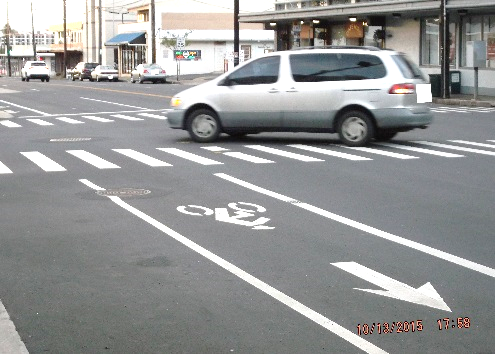 Designated bike lanes in Kaimukī make it easier use this form of transportation as well as encourage and support physical activity. However, the bike lanes are not continuously separated from the on-going traffic on Waialae Avenue which creates dangerous conditions for cyclists, vehicles, buses, shuttles, trolleys, mopeds, and pedestrians to move about safely.
Designated bike lanes in Kaimukī make it easier use this form of transportation as well as encourage and support physical activity. However, the bike lanes are not continuously separated from the on-going traffic on Waialae Avenue which creates dangerous conditions for cyclists, vehicles, buses, shuttles, trolleys, mopeds, and pedestrians to move about safely.
The U.S. Surgeon General has called to action “Step It Up!” to promote walking and walkable communities for improvement of health, i.e., reduction of chronic disease and healthy aging. This means safe and easy to walk areas for pedestrians of all ages and abilities.
 Pedestrian safety improves with adequate crosswalks and traffic lights. On Waialae Avenue, there are areas where the crosswalks that are well lit at night and well striped. There are also long count down walk signals that make crossing easier for people of all ages and abilities. Some major intersections on Harding and Pahoa Avenues now have 4-way stops and crosswalks. An area next to Kaimukī Middle School has traffic stantions with wide, paved sidewalks and traffic lights that guide both pedestrians and vehicles to move safely through a busy intersection.
Pedestrian safety improves with adequate crosswalks and traffic lights. On Waialae Avenue, there are areas where the crosswalks that are well lit at night and well striped. There are also long count down walk signals that make crossing easier for people of all ages and abilities. Some major intersections on Harding and Pahoa Avenues now have 4-way stops and crosswalks. An area next to Kaimukī Middle School has traffic stantions with wide, paved sidewalks and traffic lights that guide both pedestrians and vehicles to move safely through a busy intersection.
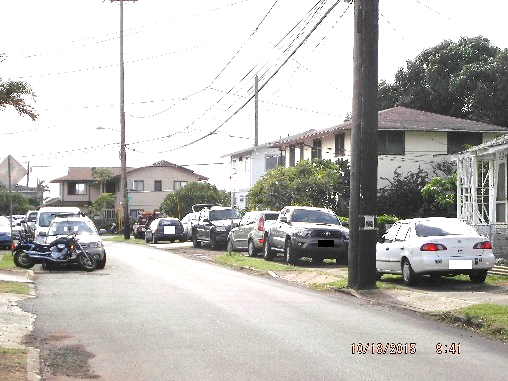 In many areas of the surrounding Kaimukī neighborhood there are no sidewalks at all. Those that do exist are often too narrow, uneven, have large cracks, too steep, and lack maintenance which make it difficult to traverse with wheeled devices, e.g., wheel chair, strollers, etc. (17th to 21st Avenues, Pahoa Avenue, Sierra Drive were mentioned as examples). At times, there is no pedestrian space due to obstacles such as parked vehicles, trash, rubbish bins, and overgrown plants. These factors make it very difficult for keiki, students walking to and from school, kupuna, handicapped, mothers with babies, etc. to utilize the walkways safely.
In many areas of the surrounding Kaimukī neighborhood there are no sidewalks at all. Those that do exist are often too narrow, uneven, have large cracks, too steep, and lack maintenance which make it difficult to traverse with wheeled devices, e.g., wheel chair, strollers, etc. (17th to 21st Avenues, Pahoa Avenue, Sierra Drive were mentioned as examples). At times, there is no pedestrian space due to obstacles such as parked vehicles, trash, rubbish bins, and overgrown plants. These factors make it very difficult for keiki, students walking to and from school, kupuna, handicapped, mothers with babies, etc. to utilize the walkways safely.
Exasperated residents verbalized difficulty driving in the community. There seems to be constant challenges on the main thoroughfare through Kaimukī on Waialae Avenue due to construction, water leaks, gas repairs, sewer problems, etc. Potholes remain in certain streets and neighbhorhood parking lots where people must swerve their vehicles to avoid them and pedestrians must try to not to trip or fall. Road repair and maintenance issues have become a source of frustration when residents are unable to determine ownership and care responsibilities.
 People felt that there are numerous areas where the intersections are confusing. The crosswalk stiping is worn out, there are no street lights, stop signage one way with crosswalks a different way, curb cuts that lead into the street rather than a crosswalk, etc. There are also no crosswalks in heavily used areas such as the Harding Avenue business area and many parks; so people frequently jaywalk.
People felt that there are numerous areas where the intersections are confusing. The crosswalk stiping is worn out, there are no street lights, stop signage one way with crosswalks a different way, curb cuts that lead into the street rather than a crosswalk, etc. There are also no crosswalks in heavily used areas such as the Harding Avenue business area and many parks; so people frequently jaywalk.
80% of the participants agreed with the statement, “Outdoor spaces and building design in Kaimukī support mobility and independence”.
Many buildings, walkways and parks have structural accomodations for people of all abilities. There are several with wheelchair ramps. In some areas, handrails help steady and guide people with elevated or steep terrains. Yet, there are some buildings are still not accessible while some just need handicap signage to clarify accessible entry/exits. Some walkways need curb cuts. Others need removal of unsightly trash or maintance of vegetation; the latter which creates uneven hazardous surfaces.
 Specific comments were voiced regarding the lack of parking in business as well as residential areas. People were pleased that the business parking lots were centrally located, convenient to customers, and serve the Kaimukī Town area all hours of the day and night. However, at certain times there is no space even with street parking and the lots need maintenance to be safe for users of all ages and abilities.
Specific comments were voiced regarding the lack of parking in business as well as residential areas. People were pleased that the business parking lots were centrally located, convenient to customers, and serve the Kaimukī Town area all hours of the day and night. However, at certain times there is no space even with street parking and the lots need maintenance to be safe for users of all ages and abilities.
The only statement that the majority of participants (89%) disagreed with was, “All Kaimukī residents have access to affordable, accessible housing options”.
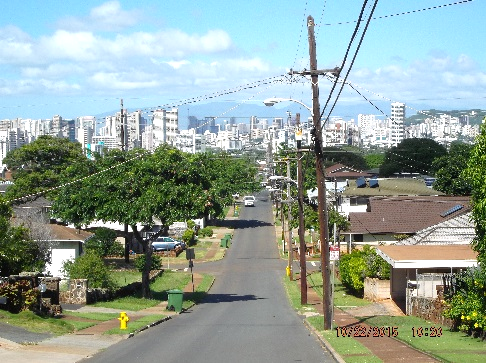 Older residential communities like Kaimukī are fortunate to have designated historic houses which preserve the charm and sense of time and place. Due to the hilly terrain, some homes have beautiful views of the neighborhood and beyond. The low density is also appreciated.
Older residential communities like Kaimukī are fortunate to have designated historic houses which preserve the charm and sense of time and place. Due to the hilly terrain, some homes have beautiful views of the neighborhood and beyond. The low density is also appreciated.
However, participants perceived a need for greater diversity of residents, in particular more younger families. It was expressed that this would enhance the overall economic, social environment and dynamics of the community, since it is an aging population with very few children. They saw the major barrier as affordability. In order to live in this area, they felt that people must either live with grandparents/older parents, need to be rich, inherit a house, or fill a single home with lots of people. A wider mix of housing options that young families can purchase such as low rise apartments, townhouses, triplexes, mixed use buildings, etc. could possibly improve the situation. Concerns were expressed regarding the lack of enforcement of current zoning laws, including rentals and potentially, the new Accessory Dwelling Unit accommodations.
Many new homes being built now seem to replace the original one story wooden homes with two-story concrete structures often with large driveways and sparce greenery. People felt that the luxury McMansion homes were oversized for the property size and out of character for the neighborhood. There were numerous opinions on how overcrowded parking conditions in certain residential areas have evolved, most referring to the demise of single family homes to multi, rentals or otherwise.
II: Social & Cultural Environment
The majority of participants (89%) agreed with the statement, “Kaimukī supports active involvement, social and cultural participation, and intergenerational connectivity among all residents”.
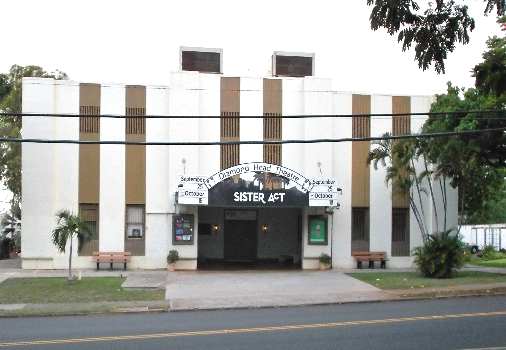 People quickly identified several locations that a mixture of ages can socialize and actively participate in the community. These included: events at KCC, places of worship, theatres, social service organization activities, and small eateries in Kaimukī Town.
People quickly identified several locations that a mixture of ages can socialize and actively participate in the community. These included: events at KCC, places of worship, theatres, social service organization activities, and small eateries in Kaimukī Town.
Besides the Dog Park, the neighborhood parks provide many opportunities for people of all ages, abilities, and economic status to interact and socialize whether it is organized (meetings, clubs, lessons, sports competition, etc.) or spontenenous recreation (playing on playground equipment, exercising, picnic on the grasses, sitting on benches, napping under trees, etc.). Keiki and Kupuna have the opportunity to “share space” in a park together or separately. Participants wondered if a truly safe, neighborly, caring community sharing public spaces for all to enjoy could again be a reality.
The majority of participants (80%) agreed with the statement, “People in Kaimukī have access to social networks and social participation”.
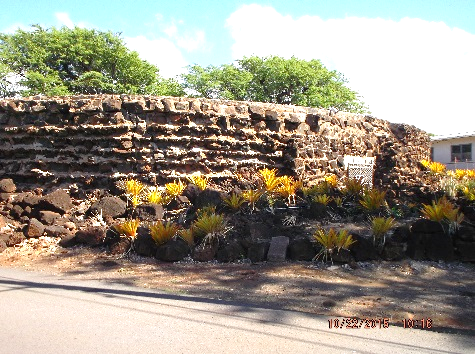 Kaimukī residents felt that it is easy to participate in outreach or educational activities. People can join an existing social group or create their own if desired.
Kaimukī residents felt that it is easy to participate in outreach or educational activities. People can join an existing social group or create their own if desired.
The parks offer socialization through classes, athletic activities and summer fun. The Diamond Head Theatre provides entertainment, volunteer venues, and classes. The Kaimukī Regional Library is a conveniently located resource for knowledge on all kinds of topics and also has meeting rooms for social events and free internet access. The Kaimukī Lions Club and Boy Scouts regularly meet at “The Bowl”and organize services to enhance the community.
 Numerous churches were mentioned where people can grow in their faith and fellowship (Kaimukī Christian, New Hope, Epiphany Episcopal, etc.) These organizations also contribute to the community through their respective service projects (community clean-up, meeting spaces, etc.).
Numerous churches were mentioned where people can grow in their faith and fellowship (Kaimukī Christian, New Hope, Epiphany Episcopal, etc.) These organizations also contribute to the community through their respective service projects (community clean-up, meeting spaces, etc.).
An important campus of the University of Hawai'i system located in Kaimukī is Kapi'olani Community College. A variety of classes and workshops, student and restaurant dining options, and special events are available for students and the community to enjoy. A huge Farmer’s Market is located in one of their parking lots Saturday mornings and Tuesday evenings that is frequented by both residents and tourists alike.
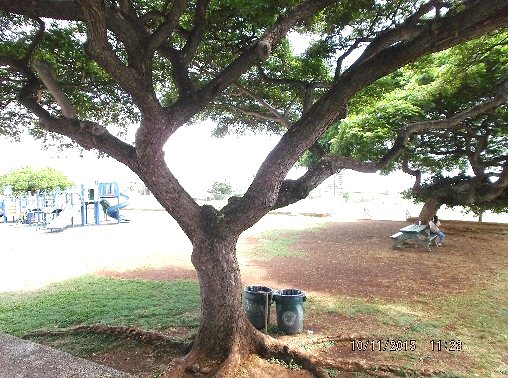 People felt there could be a wider variety of activities in Kaimukī. There could be better outdoor seating areas with shaded trees to promote socialization of small groups of neighbors and friends and other larger venues for people to enjoy family gatherings. The parks could adjust its roles to fit the needs of the community and allow better utilization of its meeting facilities. It was suggested that Kaimukī needs an central area in town with tables and chairs (like Kahala Mall) to sit, eat, and increase socialization capacity. A topic of discussion was the site of the only school in the USA that was dedicated by a reigning monarch, (Queen Lydia Lili’uokalani) that now houses State of Hawai'i Department of Education (DOE) offices when residents wanted a community center.
People felt there could be a wider variety of activities in Kaimukī. There could be better outdoor seating areas with shaded trees to promote socialization of small groups of neighbors and friends and other larger venues for people to enjoy family gatherings. The parks could adjust its roles to fit the needs of the community and allow better utilization of its meeting facilities. It was suggested that Kaimukī needs an central area in town with tables and chairs (like Kahala Mall) to sit, eat, and increase socialization capacity. A topic of discussion was the site of the only school in the USA that was dedicated by a reigning monarch, (Queen Lydia Lili’uokalani) that now houses State of Hawai'i Department of Education (DOE) offices when residents wanted a community center.
80% of the participants agreed with the statement, “Kaimukī residents have opportunities to contribute their skills, knowledge, and time to support the economic prosperity”.

Kaimukī has developed a reputation for it’s new and trendy mixture of restaurants and businesses on Waialae Avenue and nearby adjacent streets. Although some older businesses have struggled, new ones have emerged thus creating an exciting, thriving community.
Many large and small business, non-profts, and government services operate in this community such as restaurants, a few specialized healthcare practices (people or pets), auto repair, dry goods, social service related organizations, three public schools (Wai'alae, Liholiho, and Kaimukī Middle), and various parks. One of the most glamous industries located in Kaimukī is the State of Hawai'i Film Office Studios on 18th Avenue that showcases the state and brings in revenue and employment for local people.
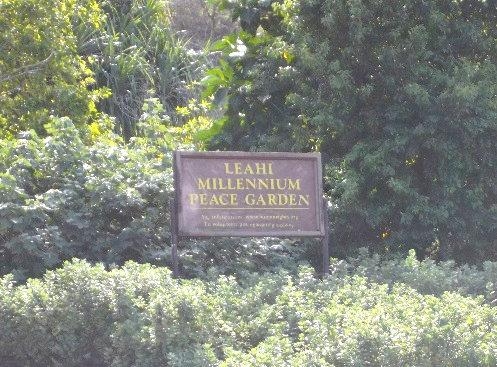
There are also many opportunities for people to volunteer in community affairs. This includes the Kaimukī Neighborhood Board, Kaimukī Business & Professional Association, Lions Club, Boy Scouts, Girl Scouts, HUGS, Red Cross, schools, senior care facilities, parks, etc.
III: Service Environment
60% of the participants agreed with the statement, “People in Kaimukī are well-informed and are able to obtain relevant information on programs and services in the community”.
 Although Kaimukī has a multitude of community and health services that are available for residents and others to access, the information about them is not easily obtained. People were concerned about dissemination of this knowledge and had many suggestions on improvement that included better leadership, needing a community resource directory, a map of the community identifying the specific entities, and offering a variety of communication vehicles for different audiences. It was strongly felt that utilization of existing or new resources would increase if people knew about them through better communication and marketing.
Although Kaimukī has a multitude of community and health services that are available for residents and others to access, the information about them is not easily obtained. People were concerned about dissemination of this knowledge and had many suggestions on improvement that included better leadership, needing a community resource directory, a map of the community identifying the specific entities, and offering a variety of communication vehicles for different audiences. It was strongly felt that utilization of existing or new resources would increase if people knew about them through better communication and marketing.
All of the participants (100%) agreed with the statement, “In Kaimukī, community supports and services (including health services) are available and accessible to all residents”.
People in attendance were very familiar with the variety of services available in the community. Detailed information were provided about the Fire Station and Kaimukī Library. Other resources mentioned were American Red Cross, The Salvation Army, Goodwill, Diamond Head Mortuary & Memorial Park, KCC’s 'Alani Daycare Center, etc.
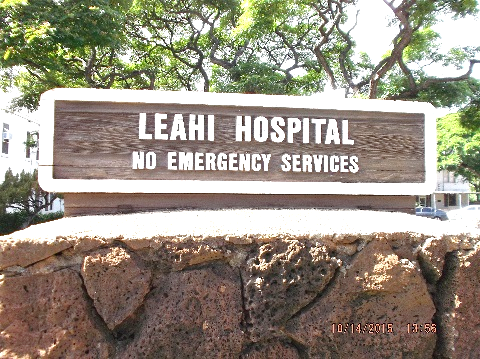 Participants identified health services located in Kaimukī such as Leahi Hospital (long-term care, day health program, and training facilities; but no emergency or critical care). Others were: The Pillbox, Maunalani Nursing Center, Diamond Head Health Center (TB testing and other public health services) and Kaimukī Dialysis Facility. There are also many options to exercise indoors/outdoors at the various parks or specific facilities such as yoga studios.
Participants identified health services located in Kaimukī such as Leahi Hospital (long-term care, day health program, and training facilities; but no emergency or critical care). Others were: The Pillbox, Maunalani Nursing Center, Diamond Head Health Center (TB testing and other public health services) and Kaimukī Dialysis Facility. There are also many options to exercise indoors/outdoors at the various parks or specific facilities such as yoga studios.
There is only one grocery store (Times Supermarket) in the Kaimukī community, but there are several open markets options for fresh fruits and vegetables as well as the Farmer’s Markets at KCC twice a week. Kaimukī Town is well-known for its great diversity of food retailers from small takeout to upscale sit down restaurants.
What are the Priorities in Creating an Age-Friendly Kaimukī?*
Physical Environment
(Outdoor spaces & buildings, Transportation, Housing)
Q1: What does an age-friendly Kaimukī Community look like?
- Businesses which take pride in their appearance, offer newly paved parking, provide easy access handicap stalls, and nice landscaping
- Planned development that allows for mixture of ages and social leveling; mixed use options; low rise preferred in order to need to keep views; how do McMansions fit?
- Numerous transportation options (TheBus; bike lanes; UH Shuttles, pedestrian pathways)
Q2: What are the priorities for creating an age-friendly Kaimukī physical environment?
- Safe walkways for pedestrians; improve and create sidewalks
- Improved parking – both in residential and business areas
- Many business parking lots are in bad shape; explore multilevel
- Parked cars on residential roadways make pedestrian walking hazardous
- Maintain transportation services
- Create more affordable housing; improve mix of housing options
- Upkeep, repair, safety of roads; determine ownership of roads (many are private)
- Determine infrastructure limitations
Social & Cultural Environment
(Social participation; Respect & social inclusion; Civic participation & employment)
Q1: What does an age-friendly Kaimukī Community look like?
- Wide variety of activities for people of all ages and abilities
- Improved availability and utilization of community resources
- Good communication of activities to reach multi-generations; can’t only rely on websites
- Better outdoor seating areas to promote socialization
- More young families
Q2: What are the priorities for creating an age-friendly Kaimukī service environment?
- Better information of events and available services through improved marketing
- Better relationship with Parks to increase usage of public recreation centers and facilities
Service Environment
(Communication & information; Community & health services)
Q1: What does an age-friendly Kaimukī Community look like?
- Improved communication that inform people of various ages and lifestyles of the numeous services that are available using a variety of tools
- Updated community resources directory with a map of locations
- Establish a nearby location for medical emergencies; maybe a Community Health Center (at KCC since they teach related courses?)
- Increase utilization of small businesses or they will disappear
Q2: What are the priorities for creating an age-friendly Kaimukī service environment?
- Health and Safety
- Make disaster preparedness and resilience training available
- Make critical care services available closer to Kaimukī
- Communication needs to be improved
- Need Leadership
- Find ways to communicate better with people of all ages, but especially seniors in community
*Considered Top Priority by the attendees of the Kaimukī Community Conversation.
Acknowledgements
A special thanks to Sharon Schneider of the Kaimukī Neighborhood Board Envision Kaimukī Committee, Seiko Sato, and the staff of the Kīlauea District Park for their assistance with this project. I would also like to thank the following people for their contributions: MAPPers (Rick Ching, Jackie Chun, Dale Fukushima, Barbara Furugen, Carol Hoshiko, Janice Kim, Brent Kutara, Ron Matayoshi, Stacy Miyashiro, Debbie Nakaoka, Nicole Nakaoka, Corliss Ota, Stacy Sakumoto, Kathleen Sato, Mamoru Sato, Sharon Schneider, Pam Seeney, Melanie Sumida, Karen Tsukiyama, and Alan Young); facilitators (Ramona Mullahey, Seiko Sato, and Ed Young); and Deborah John of the Oregon State University Extension Service for sharing the engAGE in Communities project as well as providing training and technical assistance to develop HI-CFL.
References
Historic Hawai'i Foundation. Kaimukī : A Brief History. Retrieved December 21, 2015 from http://historichawaii.org/2014/05/23/kaimuki-a-brief-history/
John, D.H. & Gunter, K. (2012). engAGE in Community, Northwest Public Health, 29, 10-11.
John, D.H., Gunter, K.B., Etuk, L., & Trost, K.K. (2012). GROW Healthy Kids and Communities HEAL MAPPS™ Toolkit Manual. Corvallis, OR: Oregon State University.
U.S. Census (2010). 2010 Census Demographic Profile: Oahu Census Tract. Retrieved December 21, 2015 from http://census.Hawai’i.gov/Census_2010/demographic/demo_profile_ct_Oahu/
U.S. Surgeon General Step It Up! The Surgeon General’s Call to Action to Promote Walking and Walkable Communities. Retrieved January 22, 2016 from http://www.surgeongeneral.gov/library/calls/walking-and-walkable-communities/exec-summary.html
Wikipedia, the free encyclopedia. Kaimuki, Hawaii. Retrieved December 21, 2015 from https://en.wikipedia.org/wiki/Kaimuki,_Hawaii
World Health Organization (2007) GlobalAge-Friendly Cities: A Guide
World Health Organization (2007) Checklist of Essential Features of Age-Friendly Cities